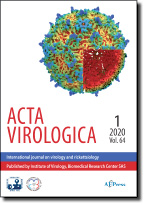Acta Virologica Vol.57, No.2 p.229-237, 2013
|
| Title: Recent progress in glycomics and proteomics of the Q fever bacterium
Coxiella burnetii |
| Author: R. TOMAN, Ľ. ŠKULTÉTY, K. PALKOVIČOVÁ, G. FLOREZ-RAMIREZ, P. VADOVIČ |
|
Abstract: Coxiella burnetii is an intracellular, Gram-negative bacterium and causative agent of Q fever. In humans, the disease ranges mostly from a flu-like illness and self-recovering mild pneumonia to severe meningoencephalitis, myocarditis or endocarditis. Recent molecular and biochemical/immunological advances, along with improved instrumentation, have provided unique insight into the host-parasite interrelationship and revealed previously unknown virulence strategies of C. burnetii. Noticeable progress has also been achieved in gaining a better understanding of the role of two major outer membrane components – lipopolysaccharide (LPS) and proteins in the life and immunopathobiology of the bacterium. Detailed glycomic studies have brought indispensable structural and functional information on LPS and its role in pathogenesis and immunity of Q fever. Recent proteomic studies have brought a deeper insight into the pathogen`s physiology, virulence and development and offered new possibilities in the investigation of inter/intra-species variation. This review will focus on advances in glycomics and proteomics of C. burnetii providing information on unique glycan and protein species, which together with other findings in the field, might lead to both a better understanding of this unusual pathogen and improvements in Q fever diagnosis and therapy.
|
|
| Keywords: Coxiella burnetii; glycomics; proteomics; detection; diagnosis; Q fever |
|
|
|
| Year: 2013, Volume: 57, Issue: 2 |
Page From: 229, Page To: 237 |
doi:10.4149/av_2013_02_229
|
|
 download file download file |
|
|
|
|
 download file
download file
